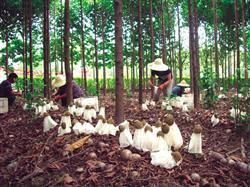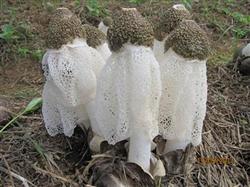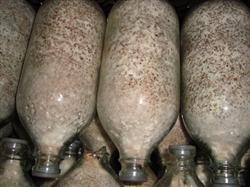Dictyophora planting: how can Dictyophora grow high yield?

How can bamboo shoots be planted with high yields? Please give guidance to Dictyophora cultivation to obtain high yield must know planting technology, the following introduction to a Dictyophora cultivation technology for reference: I. Field requirements Dictyophora cultivation of the field requires convenient transportation, loose fertile soil, high humus content, strong permeability, not easy to harden the soil. For the fields to be planted, 30kg urea and 50kg calcium superphosphate shall be applied to each mu in rainy days one month before planting to increase the nutrients of the covering soil. The following 4 plots are not suitable for planting Dictyophora:(1) The selection of planting plots should be drought and flood prevention. (2)Dictyophora can't be planted continuously, and the interval should be more than three years. Moreover, the best field is the field around which Dictyophora can't be planted. The yield of many years planting area decreases year by year. (3)Sweet potatoes, corn and other crops should not be planted in those years. (4)Fine sand-dominated fields have poor water retention, are prone to drought, and have low yields. II. Variety selection At present, the varieties planted in Dictyophora japonica are: D89, D1 and D42, mainly planted with D89 and D1, 600 bags of strains per mu (0.5 kg per bag). Mu with a large number of strains, hyphae grow fast, fruiting early, neat, high yield. The quality of the strain is related to the annual yield. Whether the strain is cultured early or physiologically mature, its hyphae are white, thick hyphae, fasciculate, dense aerial hyphae, feel hard, moderate water content is massive. When buying seed, see if the seed factory has complete certificates and ask for invoices. III. Preparation of materials for pile building The preparation time is generally selected from September to December, and the selected culture material should be fresh. The blackened and rotten raw materials have deteriorated and should not be used. During the period of raw material repurchasing and stacking, natural fermentation at high temperature and rain should be prevented from burning, reducing the nutrients of the culture medium. The "three additions". One is to increase the amount of bacteria, the more strains, the earlier the fruiting, the higher the yield; the other is to increase the proportion of nitrogen fertilizer, urea should account for 1% of the culture medium; the third is to increase the amount of culture medium, the amount of 6000 kg ( 13m ) per mu. (1)The main types of culture materials are bamboo scraps, sawdust, soybean stalk, chaff, giant fungus grass and so on. (2)The preparation amount per mu: bamboo scraps 11m, sawdust 2m, urea 50 kg, light calcium carbonate 25 kg, wheat bran 50 kg. The pH value of soil and culture medium is required to be 5~6. (3)Building heap fermentation: Dictyophora is a saprotic fungus. Through building heap fermentation, complex carbohydrates are degraded into nutrients that can be easily absorbed and utilized by Dictyophora hyphae. in early December of each year, a heap is built for fermentation, urea and light calcium carbonate are sprinkle on a layer of raw material, clean water is poured again to make that culture medium contain about 60% water, a layer of raw materials, urinate and light calcium carbonate are added again, and the like is repeated to make the heap about 1.5m high, the heap is turned over once every half month, and water is added according to the humidity of the culture medium. The principle of turning the pile is to exchange the internal and external materials, turn the pile on the spot, take advantage of the high temperature in sunny days, at this time, the heat loss of turning the pile is less, which is conducive to the re-heating and fermentation of the culture material, and turn the pile for 3~4 times in total. The fermentation process takes 50-60 days until the waste gas in the culture material is exhausted. On the one hand, the purpose of heap fermentation is to increase the nitrogen content of the culture medium, make the culture medium soft and humus, facilitate the decomposition of mycelium, promote the growth of mycelium, and thus improve the yield. On the other hand, the high temperature generated during fermentation kills miscellaneous bacteria, pests and destroys culture alkaloids. IV. Sowing period Dictyophora spp. belongs to mesophilic fungi. The growth temperature of mycelium ranges from 8 ℃ to 30℃, the optimum temperature is 20 ℃ to 26℃, and that of fruiting body ranges from 19 ℃ to 28℃, the optimum temperature is 22 ℃ to 26℃. When the temperature is stable above 8 ° C, it can be sown, and it is most suitable from mid-January to February every year. 70~80 days after sowing, the buds and fruiting bodies enter the development stage, the temperature is above 20℃, the mushrooms can be mined in late April, the middle of September, and the high yield can be harvested for 3~5 tides. Click to get more Dictyophora indusiata planting technology Click to get more edible mushroom planting technology
- Prev

Dictyophora planting: what are the diseases and insect pests of Dictyophora?
What are the diseases and insect pests of planting Dictyophora? Please introduce and guide the prevention and control of Dictyophora is a valuable edible fungus treasure, the use of drugs to control diseases and insect pests is prohibited during the fruiting body growth. Therefore, the prevention and control of diseases and insect pests should start from the environmental factors, give priority to prevention, take comprehensive measures to control methods as follows: (.
- Next

Dictyophora planting: what should be paid attention to when planting Dictyophora artificially?
What should be paid attention to when planting Dictyophora artificially? Please give guidance on artificial cultivation of Dictyophora should pay attention to the following points: 1. Field strain production: as long as the grower buys the raw material of Dictyophora, the strain can be cultivated in the field. From late December to early January, select a corner of Tian Tou and sort out a bed for heap breeding. Use 80% wood shavings.
Related
- Fuxing push coffee new agricultural production and marketing class: lack of small-scale processing plants
- Jujube rice field leisure farm deep ploughing Yilan for five years to create a space for organic food and play
- Nongyu Farm-A trial of organic papaya for brave women with advanced technology
- Four points for attention in the prevention and control of diseases and insect pests of edible fungi
- How to add nutrient solution to Edible Fungi
- Is there any good way to control edible fungus mites?
- Open Inoculation Technology of Edible Fungi
- Is there any clever way to use fertilizer for edible fungus in winter?
- What agents are used to kill the pathogens of edible fungi in the mushroom shed?
- Rapid drying of Edible Fungi

